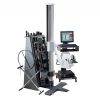
The 3 Most Common CPTs in Rehab (and How To Document Them for Reimbursement)
Treatment GuidelinesGet a detailed summary and reimbursement tips for CPT 97110: Therapeutic Exercise, CPT 97112: Therapeutic Procedure (stroke and non-stroke), and 97530 Therapeutic Activities.
Avoiding reimbursement claim denials
Have insurance companies been denying your reimbursement claims? It can be frustrating, confusing, and certainly time-consuming to make corrections and resubmit a claim for reimbursement. If your claims repeatedly get denied, there are two most likely culprits: the CPT code itself and the documentation. It’s possible that the claim uses the incorrect code, or more likely, the documentation may be missing something.
Let’s take a look at the three most common CPT codes for Physical Therapy and Occupational Therapy, and how to properly document them for reimbursement. Keep reading for a detailed summary of CPT 97110: Therapeutic Exercise, CPT 97112: Therapeutic Procedure (stroke and non-stroke), and 97530 Therapeutic Activities.
CPT 97110: Therapeutic Exercise
CPT code 97110 is defined as “therapeutic exercises to develop strength, endurance, range of motion and flexibility.” It applies to a single or multiple body parts, and requires direct contact with a qualified healthcare professional. Like many CPTs, it’s billed in units of 15 minutes, using the eight-minute rule when necessary1.
The eight-minute rule helps you count how many units of a time-based service you can bill for Medicare. The rule states that you must perform the service for at least eight minutes in order to count for one full unit.
When you sit down to document CPT 97110, there are a few requirements to keep in mind. You must include the body part/s treated, specifying the muscles and/or joints. You must also list the specific exercises the performed. For example, CPT 97110 activities include:
- active, active assistive, or passive range of motion to improve joint motion
- active, resistive exercises to increase muscle strength and endurance (include whether it’s isometric, isokinetic, or isotonic)
- stretches to improve flexibility (indicate type of stretch such as active, ballistic, pre-contraction, etc.)
- exercise to improve cardio-pulmonary endurance, such as walking on treadmill, using upper extremity ergometer
In your documentation, explain the purpose of each exercise as related to achieving a specific functional goal. Therapeutic exercises target single parameters such as improving ROM or increasing strength. These will eventually lead to the ability to perform real-life movements like ADLs. But ADLs, work tasks, sport tasks and the like belong to CPT 97530 Therapeutic Activities (more on that later).
For CPT 97110 documentation, be sure to provide information regarding volume of exercise. That means documenting the number of sets and repetitions, amount of resistance (weight, force, torque), and duration of holds. You should also document how you determined the resistance.
For example, a common method is using a certain percentage of the patient’s 1-rep max, or a percentage of their maximum voluntary isometric contraction. Finally, include description and subsequent changes in end feel, muscle tightness, etc.
Of course, if you have technology with advanced measurement capabilities, this whole process is streamlined. The PrimusRS automatically measures exercise volume and work, and creates easy to read reports with all the data you need, saving you time and creating better outcomes for your clients and clinic.
CPT 97112: Therapeutic Procedure
CPT 97112 means “neuromuscular reeducation of movement, balance, coordination, kinesthetic sense, posture, and/or proprioception for sitting and/or standing activities.” Like therapeutic activity, therapeutic procedures also apply to one or multiple body parts and require direct contact with the proper provider1.
Specific to documenting CPT 97112, you must include the body parts treated (specific muscles, joints) and along with the specific exercises and activities performed. This could include:
- specific exercises or activities performed and for what purpose,
- neuromuscular reeducation of movement, balance, coordination, kinesthetic sense, and/or posture
- proprioception for sitting and/or standing activities.
Provide information regarding volume of exercise to include sets and repetitions, work (if available), time duration, and specific techniques used such as PNF, Feldenkrais, Bobath, etc. Also note equipment used which might include BAPS board, dexterity tools, sensory training, and desensitization methods.
Once again, explain the purpose of the exercises as related to the means to achieve a specific functional goal. In other words, therapeutic exercises and/or activities target single parameters such as improving neuromuscular control, balance, kinesthetic sense, proprioception, and or posture.
CPT 97112 for Non-stroke Patients
You’ll most often use CPT 97112 for stroke patients, but it does apply to others. Some payers (more than others) may complicate this matter, but the fact is that neuromuscular is a broad category of diseases.
In addition to stroke, CPT 97112 also includes motor neuron diseases, disorders of motor nerve roots and peripheral nerves, neuromuscular transmission disorders, and muscle diseases. Some overlook this, but CPT 97112 can play a significant role in outpatient orthopedic rehab settings.
For example, you can use manual cues and have a patient perform open-chain shoulder exercises with closed eyes. This procedure will facilitate proper scapulohumeral rhythm and position sense.
Another example is maintaining balance while performing specific movements. Pelvic tilt exercises are performed to teach proper pelvis positioning. A progression of that exercise would include maintaining the tilt while moving the lower extremities and then on to maintaining proper tilt while standing/balancing on one leg.
CPT 97530 Therapeutic Activities
CPT code 97530 requires “use of dynamic activities to improve functional performance. Examples of such activities include lifting, pushing, pulling, reaching, throwing, etc.” Billing this code also requires direct, one on one contact, billed in 15-minute increments.1
This type of treatment is specific to improving functional activities. For example, you would use CPT 97530 for people having difficulty with a certain ADL or sport, or deficits in mobility, strength, balance or coordination. The
Therapeutic activities cover a wide range of functional tasks like bending, lifting, catching, pushing, pulling, throwing, squatting etc. An example of a therapeutic activity could be lifting a weighted object and placing it on the top shelf, which is mainly to strengthen overhead shoulder .
Higher Reimbursement With BTE
Treatment with a BTE system like the PrimusRS or Simulator II allows you to properly document and get reimbursed for some of the higher-yielding CPT codes. Built on the philosophy of functional rehab, our systems allow you to fully simulate real-life activities, from sports to ADLs to job functions. And you can break down any activity to the basic muscular movements to strengthen these in isolation. All while providing direct, one on one contact and generating reports that clearly show patient progress.
For example, both the PrimusRS and the Simulator II facilitate dynamic activities like lifting, pushing, and pulling at various heights. You can even simulate sports activities like throwing a baseball with the PrimusRS. In addition, these devices provide measurement of the volume of exercise in terms of work (force times distance), a significantly more accurate measure than sets and reps.
Avoid Denied Claims
The above documentation information is directed toward requirements based on CPT code chosen. There are several other reasons that your claims could be denied. A full explanation would go far beyond the scope of this article, so let’s only focus on the basics. Your evaluations should permit you to answer “Yes “to the following questions:
- Do the medical and treatment diagnoses support the need for the intervention?
- Have the problems/deficits been clearly defined and measured?
- Have the problems/deficits been related to impact on function?
- Are valid, standardized outcomes measures that relate to each deficit present? Have your established medical necessity for the specific treatment interventions?
- Is documentation adequate to support the need for skilled intervention?
- Do notes show progression and modification of treatment program?
Documentation Checklist
In order to have proper documentation, you must be proactive in your approach. Follow this checklist when reviewing your documentation:
- Establish diagnosis
- Use ICD10s that support the treatment intervention/s
- Be thorough in your evaluation, being sure to identify each problem. Clearly identify any deficits
- Relate problems to function; how the deficit limits functional activity/ies
- Develop an evidence-based plan of care that addresses each problem
- Establish measurable goals that are time based
- Use valid, standardized outcome measures that relate to the deficit for which the intervention is directed in order to document progress or lack thereof
- Establish medical necessity for specific treatment interventions
- Document need for skilled intervention; particularly for therapeutic exercise as it is assumed by payers that patients can be instructed in exercise program and then execute independently
- Prove your care is necessary for safe and effective treatment.
All in all, proper coding and documentation can take extra time, but it goes a long way in proving the effectiveness of your care plan. Make sure you are familiar with these three common CPT codes and their applications, choose the right ones for your care plan, and document your reasoning and progression thoroughly. If you have another CPT code or reimbursement issue you’d like us to cover in another TherapySpark article, email us at therapyspark@btetechnologies.com .
Janna Jacobs, PT, CHT, CEAS, CDP
Senior Clinical Research Specialist
BTE
Reference
- Optum360° and APTA. Coding and Payment Guide for the Physical Therapist. West Valley, Utah. Optum360°. 2018





